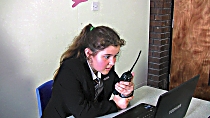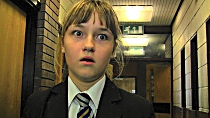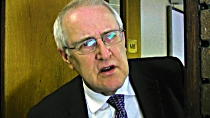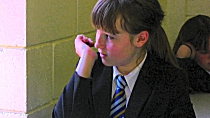
|
The world of non-commercial film and A-V |
Events Diary | Search | ||
| The Film and Video Institute | | ||||
The making of THE TEST |
||||||||||||
|
The
film was awarded 4-stars and Best Entry in the Under-16
Category at BIAFF 2013 and was selected to represent Britain
in the programme for UNICA 2013. It was one of several BIAFF
entries from the school.
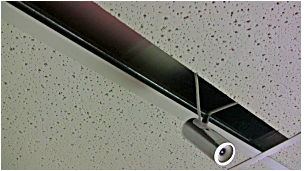 Located on the outskirts of Sheffield in an area
called Kiveton Park, Wales High School has established a
reputation for producing fantastic young film-makers. This was
evident at the recent BIAFF, when the school picked up two
awards, including Best Entry in the Under 16 Age Category for
their film The Test. Located on the outskirts of Sheffield in an area
called Kiveton Park, Wales High School has established a
reputation for producing fantastic young film-makers. This was
evident at the recent BIAFF, when the school picked up two
awards, including Best Entry in the Under 16 Age Category for
their film The Test.The Test was produced by the school’s film and animation club which was established in 2011. It takes place every Tuesday after school and is run by media technician Liam Sanderson. We asked him to tell us more ... The club started out as an opportunity for the younger students to make their own films, and they began by producing stop-motion animations using the excellent free software AnimatorDV. 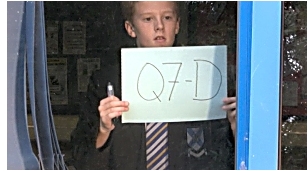 But they soon got bored with animating
plasticine models and asked if they could make their own live
action films outside the classroom. The first few attempts
mainly involved lots of running down school corridors with a
camera and play fighting in classrooms. But they soon got bored with animating
plasticine models and asked if they could make their own live
action films outside the classroom. The first few attempts
mainly involved lots of running down school corridors with a
camera and play fighting in classrooms.I felt it was important not to instruct the students or bore them with the techniques of film-making. I wanted them to have fun and learn from their own mistakes. But I also wanted them to produce a final product. I came up with a few ideas that allowed them to have fun, but produced a film with a beginning, a middle and an end. The SwitchThe first film made by the film and animation club was The Switch.
We finally all agreed that the funniest idea was to the have the briefcase’s final destination as a school toilet and the contents of the briefcase should be a toilet roll – delivered to a waiting student. We shot the film really quickly during just one of our after-school club sessions. We used a Canon HV40 camera shooting in HDV with a Rode VideoMicPro for sound. Each student took turns filming each set-up, although I was constantly looking over their shoulders to make sure each shot was framed well. The editing process was also incredibly quick. We used Adobe Premiere CS5.5 and I decided to give the students their first editing workshop. I manned the controls while they watched what I did. Every shot had been pre-planned so the editing process was simply a case of choosing the best takes - which we did democratically. Since this project even the youngest students have become very adept at using this software.
I have since recommended this film concept to other teachers and people working in schools as a great starting project for young film-makers. Using the strict concept of a series of hand-offs, the children’s imaginations can fill in the gaps and decide what is inside the briefcase, letting that dictate the ending. For example, a bomb is taken to the headteacher’s office… the film cuts to black and ends with a bang. It’s a really effective way of creating a simple and engaging short film. The Switch went on to screen at a number of children and young people’s film festivals and there has been much talk among students about a possible a sequel. The Test
Rather than making a film featuring another series of hand-offs, I encouraged the students to make something that showed them once again working together towards a shared goal, and this ultimately led to The Test. Again I gave them a simple story concept with a beginning, middle and end. It was to be a heist film. A group of students would team together to cheat at a maths test. I then left it to the students to fill in the gaps… and that’s where it got complicated. The problem was, everybody wanted a part in the film. So we had to adapt the idea and come up with a way creating parts for everybody whilst maintaining a simple structure. Children’s imaginations can be frighteningly brilliant and if you can control their ideas within a tight structure, the results can be truly amazing. The script became much more ambitious, with fantastic new characters and a richer, more complex storyline. Now we just had to make it. The Test was entirely filmed by two members of the club who didn’t want to act in the film. Everything was shot with two Canon HV40s. Camera One would shoot a wide shot and Camera Two would shoot a close-up of the same action. Everything was lit with two softbox lighting units. Time was limited and as there were two students who wanted to operate the camera, the easiest approach was to shoot two cameras simultaneously. This also meant we didn’t have to do repeat takes with the actors who, once the glamour of the film-making process had worn off, soon became bored and distracted. The two cameras offered greater coverage of each scene and helped make the scenes more dynamic when we edited them.
Wales High School film and animation club has since completed a new film called Positive Learning in the Classroom. It’s a tongue-in-cheek information film which explains how fellow students should behave at school. The club plans to enter it into next year’s BIAFF. |
Share your passions.

Share your stories.




